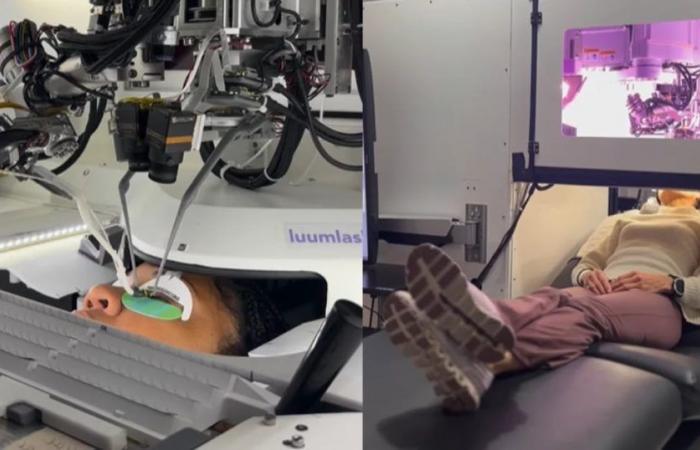They have created a robot with artificial intelligence that applies eyelash extensions with high precision. As if it were a science fiction movie, clients have to enter a CT-like machine so a machine can attach false eyelashes to them.
This is a startup called Luum Lash that seeks automate aesthetic processes with robotic devices that integrate computer vision and artificial intelligence. A session costs $170.
This novel device also revives the classic debate about the displacement of workers by machines. Will eyelash cosmetologists be replaced? In this precise case, no. The experience with the robot is assisted by a lash artist.
Laura Martínez, content creator and founder of a false eyelash brand, tried the experience and recounted her experience through Instagram.
According to the video, Martínez was in a headquarters of Ulta, an American chain of beauty stores. There a person who is dedicated to applying false eyelashes (lashista, as she referred to it) from Luum Lash received her and shared an informed consentwhich had to be signed to proceed with the session.
Then, the lashista showed her the eyelash catalog. “They had three types, I chose the most glamorous one, which was more filling,” said the content creator.
He then sat in a cabin, which includes a stretcher and a robot with arms. Before starting the procedure, the human lashista cleaned her eyelashes to remove traces of makeup and applied two stickers or patches: one around her eyes and another on her eyelash line.
“I found them super curious because they have a kind of code that the robot reads,” Martínez explained.
The cosmetologist adjusts the table so that the robotic arms can reach the client. You could say that this step is reminiscent of a tomography.
Start placing the eyelashes. “The robot has some kind of pincers (arms). The feeling is super strange, you don’t feel pain but you feel a sensation of movement. She made one eye and then the other,” Laura said.
When the machine finishes its task, the lashista returns to review and correct errors that have been made, such as leaving spaces without eyelashes. The process took two hours and cost $170.
“I liked the result. The robot does 50% of the work and the lashista does the other 50%. “Robots are not going to take away the jobs of lash artists,” Martínez commented.
Luum’s technology combines robotics, artificial intelligence and computer vision. In the process of developing the machine, the robotic arms learned movements through artificial intelligence, so they know how to isolate a natural eyelash to adhere the extension.
Computer vision is a technology that allows the robot to “see” the client. It uses cameras and algorithms to detect and analyze customer movement in real time. If the client moves, the robot stops and only resumes applying extensions when the client is still
Accuracy errors and technical failures could cause damage or discomfort. In this context, a person made a comment on the company’s Instagram video asking what would happen if he blinked during a session.
The beauty company explained that if this situation occurred there would be no harm since robotic arms are only capable of interacting with eyelashes thanks to their computer vision and design which integrates a soft tip with small magnets.
Outside of this risk inherent to the application, it must be taken into account that the device may not be able to identify signs of allergic reactions. Lack of strict hygiene protocols would result in eye infections.






